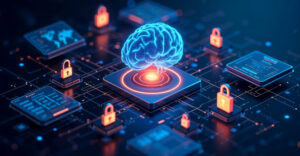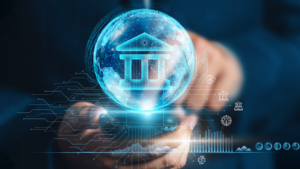
Sridevi B
Revolutionary Paradigm Shifts and Opportunities in the Web3 Era
What is Web3?
It’s well known that the World Wide Web serves as the backbone of the Internet. Web3 refers to the third iteration of the internet, which is powered by blockchain technology. Unlike the current centralized web, where a few large corporations control most of the data and platforms, Web3 aims to decentralize the internet, giving users more control over their data and experiences.
Key Paradigm Shifts
Decentralization
Data and applications are distributed across a network of computers rather than stored on a single server, enhancing the system’s resilience against censorship and attacks.
Blockchain
A blockchain is a digitally distributed, decentralized ledger that spans a network of computers, enabling the recording of transactions. When new data is added, a new block is created and permanently appended to the chain. All nodes in the blockchain are updated to reflect this change, ensuring that the system is not reliant on a single point of control or failure.
Smart Contracts
Smart contracts are software programs that automatically execute when specific conditions are met, such as the terms agreed upon by a buyer and seller. These contracts are encoded on a blockchain and cannot be altered.
Digital Assets and Tokens
Digital assets are items of value that exist exclusively in digital form. They encompass cryptocurrencies, stablecoins, central bank digital currencies (CBDCs), and non-fungible tokens (NFTs). Additionally, they include tokenized versions of physical assets, such as artwork or tickets to concerts and sporting events.
Permissionless and Trustless
Web3 enables direct, peer-to-peer interactions without relying on intermediaries. Anyone can participate in the network without seeking permission, fostering an open and inclusive environment.
Security and Privacy
Web3 prioritizes user privacy by granting individuals greater control over their data. Cryptographic techniques are employed to protect information from unauthorized access and manipulation.
Interoperability
Web3 promotes a vision of interconnectedness among various platforms and services. It encourages seamless interactions between different blockchain networks. This interoperability allows for the creation of richer, more diverse applications that can serve a broader array of needs.
Ownership and Control
Web3 empowers individuals with true ownership of their digital assets. They can decide how their data is used and shared, including the potential to monetize it or maintain privacy.
A New Frontier for Opportunities
The Rise of NFTs
Non-fungible tokens (NFTs) have rapidly gained popularity, representing distinct digital assets that can be purchased, sold, and traded on blockchain platforms. NFTs have been used to tokenize everything from digital art and collectibles to virtual real estate and even music. This new asset class has opened up exciting possibilities for artists, creators, and investors alike.
Example: Beeple’s “Everydays”- This NFT artwork by Mike Winkelmann, known as Beeple, sold for a record-breaking $69.3 million at Christie’s auction in 2021.
Decentralized Finance (DeFi)
DeFi is a rapidly growing sector of Web3 that aims to democratize access to financial services. By leveraging blockchain technology, DeFi platforms can provide users with a wide range of financial products, including lending, borrowing, trading, and insurance. DeFi has the potential to disrupt traditional financial institutions and provide more transparent, efficient, and inclusive financial services.
“In 2023, over $100 billion was invested in DeFi lending, demonstrating the growing popularity of decentralized lending solutions.”
Web3 Gaming
Web3 games are a new class of blockchain-based games that empower players with true ownership of in-game assets such as NFTs. They often feature play-to-earn (P2E) models, allowing decentralized economies, community governance, and interoperability, enabling assets to be used across different games. This creates a more immersive and engaging gaming experience, as players have a real stake in the games they play.
Example: Axie Infinity – Players collect, breed, and battle fantasy creatures called Axies, each represented as an NFT. Players earn tokens through gameplay, enabling true ownership and trade of their in-game assets.
Decentralized Autonomous Organizations
New Business Models
Challenges and Concerns
- Regulatory Uncertainty: As Web3 technologies continue to grow, regulatory frameworks are still being developed. This creates uncertainty for businesses and consumers regarding consumer protection, contract enforceability, and compliance with anti-money laundering standards.
- User Experience: Web3 products often lack the polish and user-friendliness of their Web2 counterparts. Many consumers and businesses are unsure about the practical benefits of Web3 technologies, such as NFTs, and their real-world value.
- Scalability: Many blockchain networks struggle to handle a large number of transactions, limiting their scalability. In other words, as the number of users in Web3 increases, transactions could become more expensive and experience delays.
- Security: Smart contracts and decentralized applications can be susceptible to security vulnerabilities, such as hacks and exploits. The decentralized nature of Web3 can make it difficult to protect users from phishing attacks and scams.
Conclusion
The Web3 era is not just a technological advancement; it’s a revolution in how we think about ownership, control, and community. By understanding and leveraging the paradigm shifts it brings, we can create a more equitable, secure, and vibrant digital landscape. Whether you’re a creator, entrepreneur, or simply an internet user, now is the time to explore the opportunities that Web3 presents. The future is decentralized, and it’s time to be part of it.
ACL Digital is dedicated to driving digital transformation across various industries, with a strong focus on blockchain technology. Our blockchain practice offers comprehensive enterprise solutions tailored to meet specific business needs. This commitment ensures that businesses can leverage innovative blockchain initiatives to enhance efficiency, transparency, and security in their operations. To learn more, connect with our experts at business@acldigital.com.
Related Insights

Risk Management in Medical Device Product Development: How ACL Digital Helps You Stay Ahead

Transforming Pharma Logistics with AI and IoT

Quantum Computing in Telecom: Revolutionizing Networks with AI and Security

The Role of Generative AI in Financial Compliance & Risk Management

Custom Silicon vs. Off-the-Shelf Chips: Choosing the Right Approach for Smart Devices



